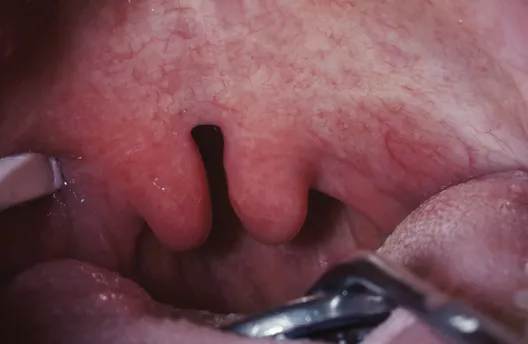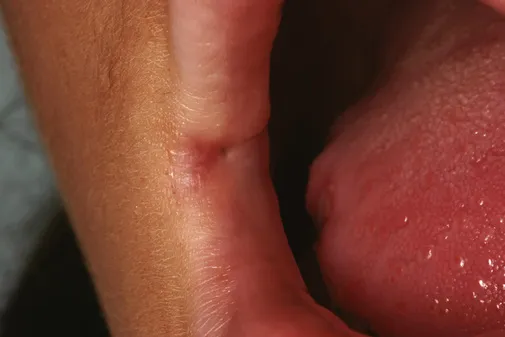
eBook - ePub
Color Atlas of Oral and Maxillofacial Diseases - E-Book
Brad W. Neville, Douglas D. Damm, Carl M. Allen, Angela C. Chi
This is a test
Share book
- 544 pages
- English
- ePUB (mobile friendly)
- Available on iOS & Android
eBook - ePub
Color Atlas of Oral and Maxillofacial Diseases - E-Book
Brad W. Neville, Douglas D. Damm, Carl M. Allen, Angela C. Chi
Book details
Book preview
Table of contents
Citations
About This Book
Introducing an essential new practical atlas for dental students and clinicians alike! The Color Atlas of Oral and Maxillofacial Diseases provides comprehensive, practical information on the most common oral and maxillofacial diseases and disorders. This new text uses a quick-access atlas format to help you easily look up clinical signs, diagnosis, and treatments. Nearly 750 high-quality images accompanied by brief narratives demonstrate exactly what clinical signs to look for – making an intervention as timely as possible. Written by four of the top dental authorities in the world, this concise resource is sure to become a clinical favorite.
- NEW! Quick-access atlas format makes it easy to look up clinical signs, diagnosis, and treatment of oral and maxillofacial diseases
- NEW! Nearly 750 high-quality radiographs and color clinical photos facilitate the identification of lesions and diseases.
- NEW! Comprehensive, focused coverage highlight diseases that may affect the oral and maxillofacial regions.
- NEW! Full-color design and illustrations.
- NEW! Logical organization reflects the sequence in which content is generally presented to predoctoral students
Frequently asked questions
How do I cancel my subscription?
Can/how do I download books?
At the moment all of our mobile-responsive ePub books are available to download via the app. Most of our PDFs are also available to download and we're working on making the final remaining ones downloadable now. Learn more here.
What is the difference between the pricing plans?
Both plans give you full access to the library and all of Perlego’s features. The only differences are the price and subscription period: With the annual plan you’ll save around 30% compared to 12 months on the monthly plan.
What is Perlego?
We are an online textbook subscription service, where you can get access to an entire online library for less than the price of a single book per month. With over 1 million books across 1000+ topics, we’ve got you covered! Learn more here.
Do you support text-to-speech?
Look out for the read-aloud symbol on your next book to see if you can listen to it. The read-aloud tool reads text aloud for you, highlighting the text as it is being read. You can pause it, speed it up and slow it down. Learn more here.
Is Color Atlas of Oral and Maxillofacial Diseases - E-Book an online PDF/ePUB?
Yes, you can access Color Atlas of Oral and Maxillofacial Diseases - E-Book by Brad W. Neville, Douglas D. Damm, Carl M. Allen, Angela C. Chi in PDF and/or ePUB format, as well as other popular books in Medicine & Dentistry. We have over one million books available in our catalogue for you to explore.
1
Developmental Defects of the Oral and Maxillofacial Region
Cleft Lip and Palate
Fig. 1.1
Cleft lip (CL) is a common congenital anomaly that is caused by defective fusion of the medial nasal and maxillary processes during embryologic development. Approximately 80% of cases are unilateral and 20% are bilateral. Cleft palate (CP), which results from failure of the lateral palatal shelves to fuse, often occurs in conjunction with CL, although it also may develop as an isolated defect. CL alone and CL with CP are etiologically related conditions that can be grouped together as CL ± CP (CL with or without CP). CP only (CPO) represents a separate entity from CL ± CP. Orofacial clefting is seen with greater frequency in a variety of specific genetic syndromes, although more often it occurs in a sporadic fashion due to a combination of environmental and genetic factors. Factors known to increase the risk for clefts include maternal smoking, alcohol consumption, and phenytoin usage.

Figure 1.1 Cleft Lip Unilateral cleft of the left upper lip. (Courtesy Dr. Cathy Flaitz.)
The frequency of CL ± CP varies considerably among different racial/ethnic groups. Among whites, the frequency is estimated at 1 per every 700 to 1000 births. The prevalence in blacks is much lower, with a rate of 0.4 cases per 1000 births. In contrast, the rate in Asian populations is about 1.5 times that seen in whites. The highest rate occurs in Native Americans, with a frequency of 3.6 per 1000 births. CL ± CP is more common in males, whereas CPO is more common in females.
Orofacial clefting can result in a variety of problems related to appearance, feeding, speech, hearing, and socialization skills. Management involves a dedicated craniofacial team, which may include specialists in genetics, oral and maxillofacial surgery, orthodontics, otolaryngology, pediatric dentistry, pediatric medicine, plastic surgery, prosthodontics, psychology, and speech pathology. Treatment may require multiple surgeries, with repair of CL usually accomplished around 2 to 3 months after birth and surgical correction of CP undertaken between 6 and 12 months of life.
Bifid Uvula (Cleft Uvula)
Fig. 1.2
During the embryologic formation of the hard and soft palate, the lateral palatal shelves normally fuse in the midline. This fusion begins in the anterior region of the palate and progresses posteriorly to the uvula. If the fusion is not totally completed, then a bifid uvula may occur, which represents the most minimal manifestation of a cleft palate (CP). Sometimes a bifid uvula may be associated with a submucous palatal cleft in which the overlying mucosa is intact but there is a defect in the formation of the musculature of the soft palate. Submucous clefts also may be associated with a notched defect of the midline bone of the posterior hard palate. Bifid uvula is more common than complete CP, with an estimated overall prevalence of 1% to 2%. The frequency is much higher in Asian and Native American populations. In most instances, bifid uvula is an incidental finding that does not cause any problems. If an associated submucous CP is present, velopharyngeal insufficiency may be present, which can result in hypernasal speech. A bifid uvula can be associated with certain genetic conditions, such as van der Woude syndrome and Loeys-Dietz syndrome (hypertelorism, bifid uvula or CP, and aortic aneurysm with tortuosity).

Figure 1.2 Bifid Uvula A midline cleft divides the uvula into two lobes.
Double Lip
Fig. 1.3
Double lip is an uncommon oral anomaly in which there is an excess fold of tissue along the mucosal surface of the lip. It either may be congenital or develop later in life. The upper lip is affected more frequently than the lower lip, although sometimes both lips are involved. The redundant tissue may be seen bilaterally in a symmetric fashion, or it may appear primarily on one side. When the lips are at rest, a double lip may not be noticeable; however, when the patient smiles, the excess tissue will become evident. Double lip occasionally may be a component of Ascher syndrome, which is characterized by the following triad: (1) double lip, (2) blepharochalasis (edema and sagging of the upper eyelid), and (3) nontoxic thyroid enlargement.

Figure 1.3 Double Lip An extra fold of tissue hangs down from the left upper lip.
No treatment may be required for mild forms of double lip. However, more severe examples can be managed by surgical excision of the excess tissue for cosmetic purposes.
Commissural Lip Pits
Fig. 1.4
Commissural lip pits are tiny mucosal invaginations at the corners of the mouth near the vermilion border. Such depressions have been noted in 12% to 20% of the adult population, whereas among children the reported prevalence is only about 0.2% to 0.7%. Although such pits often are considered to be congenital defects, their increased frequency in adult patients suggests that they usually do not appear until later in life. Commissural lip pits occur more often in males than in females.

Figure 1.4 Commissural Lip Pit A punctate depression is present at the right lab...